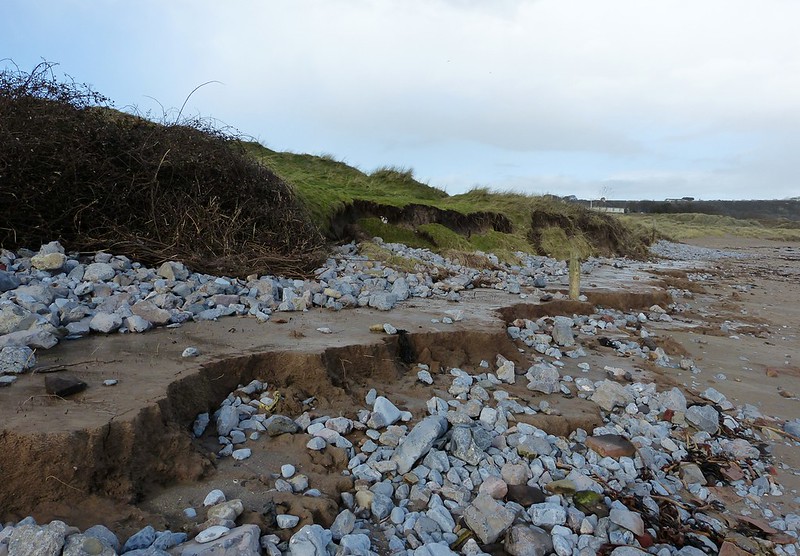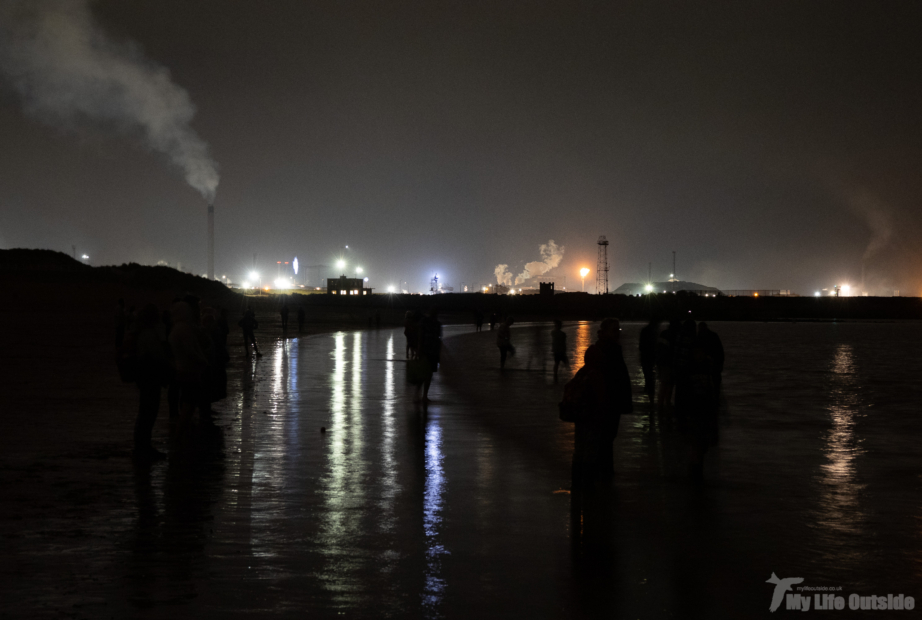
It’s easy to forget the tidal surge of three weeks ago when you see the sea looking as it was on Sunday, but signs of our changed landscape are never far away. The view above was taken at Port Eynon during one of the days sunnier spells and you’d find it hard to imagine those relatively calm waters causing much of a problem. Just out of shot though sit a couple of houses that bare their scars for all to see. What little protection once afforded them has simply been smashed to pieces and there must be real concern amongst their owners with even higher tides than those which caused this damage forecast for the coming days.

It’s not just man-made structures which have suffered however. Already subject to massive sand loss over the past decade or so, the beach at Port Eynon is now more bereft of material than I’ve ever seen it. Underlying layers of clay have been exposed over large swathes of the western section whilst behind the sand dunes have also seen significant erosion. For as far as I could see their seaward extremities show signs of collapse as, perhaps more significantly, does the cliff further east.


With the main focus of news reports understandably on the human story there is a risk that destruction of important habitat such as this could be overlooked. Bring the current inland river flooding into the equation along with calls for river dredging and new defence schemes and it’s not hard to imagine irreparable damage being done in the pursuit of an almost impossible goal. I’ll admit to some bias here as fortunately my property is not one being directly effected but firmly believe that this is the time for a more innovative approach. Instead of working against nature we should start to work with it. Instead of deepening river channels why not slow the flow of water into them through afforestation and local storage facilities such as urban ponds and meadows. Where coastal flooding is a problem perhaps a degree of land could be surrendered to allow the regeneration of saltmarshes that themselves are known to act as excellent barriers against the sea. Not only would these solutions be more long term they would also have a huge benefit to the well-being of local communities and the wildlife that lives there. Of course there are locations where these initiatives wouldn’t be suited and we would have to fall back on concrete and brawn, but it would be nice to see some more joined up thinking where possible. We already have the science to back up these ideas, there just needs to be a willingness (and the funding) there to implement them.



1 Comment
Stewart M · February 3, 2014 at 8:23 am
Going back and looking at what the weather can do to the best we can build is sobering!
I walked though some streets that had be destroyed by bush fires a few years ago – it made me appreciate the safety of inner suburbia!
Cheers – Stewart M – Melbourne